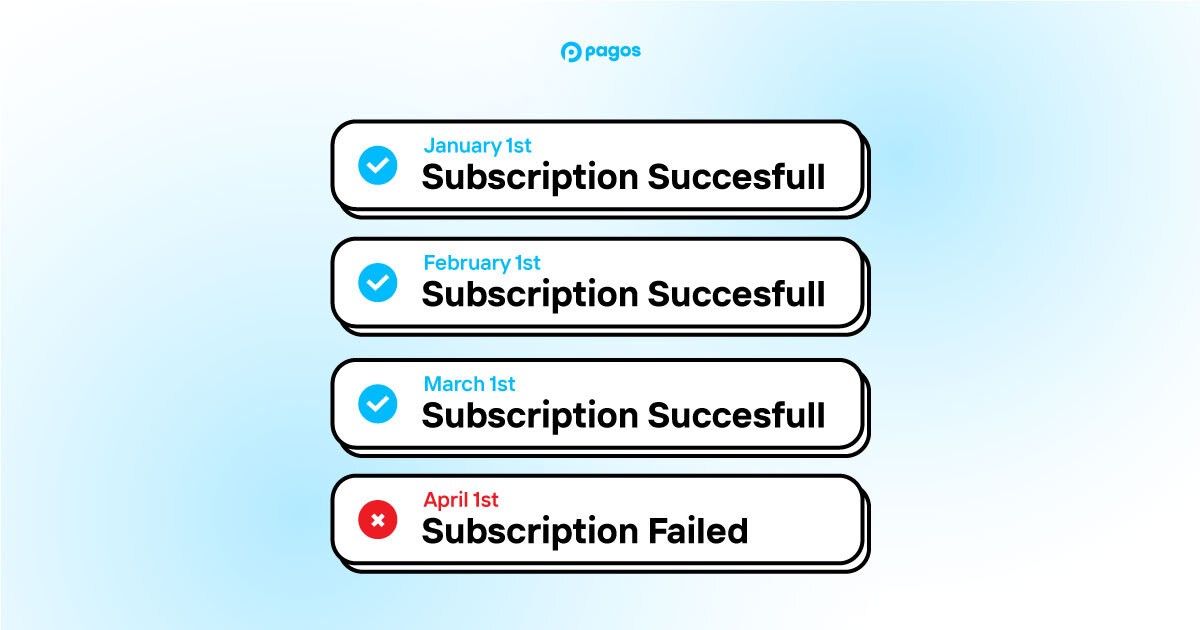Industry
Payments in a Subscription Economy
Payments in a Subscription Economy
In recent years, we’ve seen an unprecedented spike in the number of subscription services in the market. From pet food and clothing to virtual fitness programs and streaming services, the subscriptions a customer can sign up for are seemingly endless. Customers appreciate the lack of friction that comes with recurring subscription payments; similarly, they benefit from the network tokenization strategies subscription businesses often use, which keep cards stored on file both secure and up to date. All that being said, customers still want to maintain autonomy over stopping or making changes to their subscription plans.
In a bid to grant customers more control over their digital and subscription services, issuers are starting to leverage services like Visa Stop Payment Service. Through this new program, card users can request their issuer—not the merchant—stop Visa from authorizing ongoing subscription or installment payments at will. Similarly, dedicated subscription management companies like Rocket Money and Minna have entered the market to provide consumers and banks with different ways to manage all their subscriptions from a single place. Suddenly, card issuers and consumer fintechs are now at the center of the subscription cancellation experience—not merchants.
In today’s post, we’ll explore the impact of these new subscription cancellation services on subscription businesses, first through the lens of customers and then that of the merchants. By using Peacock by Pagos, our data aggregation and visualization platform, we’ll even show you how to track those impacts in your own payments and make the right changes to pricing, partnerships, and product in response. Let’s get started!
The Customer Experience
Traditionally, customers wanting to cancel a subscription service had to contact the associated merchant. They might then fill out a form to indicate the reason behind their cancellation request or even see options for lower tier pricing meant to entice them to stay. New subscription cancellation services instead offer customers the opportunity to cancel ongoing payments directly from a banking website or mobile application.
Canceling independent of the merchant means customers can do so without any hassle or friction. This is especially enticing in recent years when the subscription service market has expanded at unprecedented rates; customers can easily cut expenses by individually canceling underutilized subscriptions at will. It’s also an attractive option for consumers when specific merchants make cancellation hard with a friction-filled process.
The Merchant Impact
Customers don’t need to talk to merchants directly anymore in order to stop all future payments for subscription products or services. This presents a huge challenge for your subscription business, as you no longer have a chance to combat churn with financial incentives or perks. Additionally, you can’t collect valuable context from the customer about why they're leaving or what could convince them to stick around.
When a customer does cancel via their issuing bank or a platform like Rocket Money, your next attempt to charge the customer can be declined with the reason code stop_all_recurring. This is a new type of decline that will actually block the current billing cycle and all subsequent retry attempts; in many cases, it will also block your customer from signing up again with the same payment method. You can then track the number of these declines to measure the overall impact on your business. Depending on the numbers, you may decide to adjust your cancellation processes to better adhere to this new reality.
How Pagos Can Help
Peacock by Pagos ingests all your payments data from each of your individual processors via simple, no-code connections, and presents it back to you in dashboards of stunning data visualizations. With this tool, you can monitor changes to your approval rate, decline code breakdown, transaction volume, chargeback rate, and so much more—all in one place and in real time. As payment processing grows more and more complex, such data visualization capabilities offer you the unique opportunity to observe the rippling effects of market changes on your entire payments stack.
The Visa Stop Payment Service is so new and growing that the impact on your business will be dynamic. That’s why it’s so important to analyze changes to your decline rates and the decline code percentage attributed to stop_all_recurring. Peacock contains a Declines dashboard that breaks down just that data for you over time and across your different processors, markets, and payment methods. Alternatively, you can filter Peacock to only show data for transactions decline with the stop_all_recurring decline code. Then you’ll be able to identify the card brands, issuing banks, or even customers’ issuing BINs most commonly declined as a result of subscription cancellation services. Armed with this information, you can develop a strategy in partnership with the issuers or technology providers to address the issue directly,
One example of a major player in the market trying to make these subscription cancellation services better for customers and merchants alike is Minna Technologies. The issuers that work directly with Minna actually allow merchants to address cancellations that happen outside of their flow.
Monitoring stop_all_recurring Declines in Custom Dashboards
Another way you can monitor stop_all_recurring declines is by building out a custom dashboard in Peacock. In custom dashboards, you can add any charts you want to view side by side, and filter the data to only show those data segments you’re most interested in. Let’s walk through an example.
Below, we’ve created a custom dashboard that brings together a view of stop_all_recurring declines across two major markets: the US and the total European market. Before you decide to reach out to a partner, issuing bank, or merely adjust your own offers and pricing, you’ll want to break down the total trends of this specific decline.

The left side of this dashboard presents the US market breakdown for this example merchant. You can see the overall trend of the stop_all_recurring decline, and—more importantly—which issuing banks are driving the trend. It’s no surprise that the biggest US issuers are on the list.
From here, you have a couple options of what to do next:
You could present different subscription plans to customers or encourage them to raise product concerns or questions. The easiest way to execute this would be to incorporate a BIN check at checkout; if the BIN matches with an issuer that implements stop_all_recurring or is at high risk of having customers use subscription cancellation services, you could adjust your offerings.
You can reach out to subscription management companies to convert blocking declines into cancellation flows, thereby allowing you the present other options to keep dissatisfied customers.
You can (and probably should) adjust your retry strategies so you minimize any automated recovery attempts for customers with these BINs or cards from these issuing banks. Such retries will largely be unsuccessful and cost you money.
You Can Do It!
The subscription service economy has undergone massive growth in the last few years. As the market continues to evolve, we can only expect to see the introduction of more services like Visa's Stop Payment Service and platforms like Minna Technologies. In response, your subscription business and strategies to mitigate churn or gather effective feedback will have to adapt. With Pagos' Peacock platform, you can track declines related to subscription cancellations and gain valuable insights to inform strategic adjustments and potential partnerships with issuers and technology providers.
Interested in working with us? Check out Peacock or contact us today for a demo!
By submitting, you are providing your consent for future communication in accordance with the Pagos Privacy Policy.





